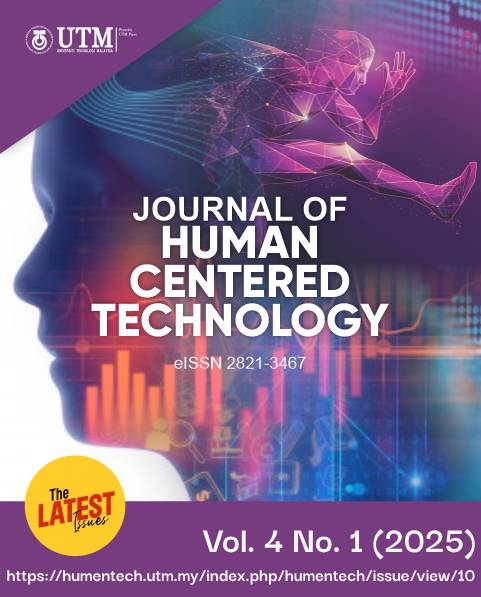In-vitro Biocompatibility Analyses on Co-electrospun of Polyurethane/Chitosan and Polyvinyl Alcohol/Elastin Vascular Membrane
DOI:
https://doi.org/10.11113/humentech.v4n1.88Keywords:
Vascular membrane, Co-electrospinning, ; BiocompatibilityAbstract
The demand for vascular grafts and membranes is rising, particularly in Malaysia, where cardiovascular diseases are the leading cause of death. Chitosan (CS) and elastin (EL) are commonly used in cardiovascular applications for their cell adhesion and proliferation properties, promoting functional tissue formation. This study blended these natural polymers with synthetic materials, polyurethane (PU) and polyvinyl alcohol (PVA), to create co-electrospun vascular membranes. Glutaraldehyde (GA) was used as a crosslinking agent to enhance membrane stability. The study aimed to investigate the biocompatibility of co-electrospun membranes before and after GA crosslinking, focusing on cell viability and proliferation using cardiomyocytes. The results obtained from cell viability show that all co-electrospun membranes were very toxic, with the highest cell viability found in PU-CS/PVA at 26.36 ± 4.52% and PU-CS/PVA-EL at 22.27 ± 12.56%. However, in the cell proliferation analysis, the PU-CS/PVA-EL membrane was able to support cell proliferation at 85.88 ± 4.47% on day 3 and 78.34 ± 1% on day 7. After crosslinking, all the co-electrospun membranes experienced a significant reduction in cell proliferation that led to cytotoxicity. Therefore, due to their toxicity, this study did not support crosslinked PU-CS/PVA-EL membrane for cardiovascular applications.









